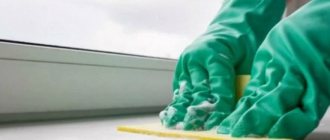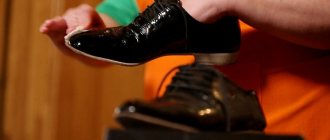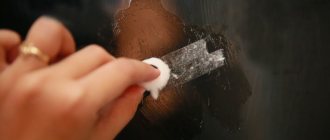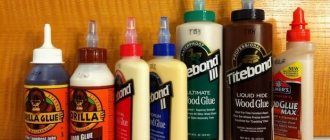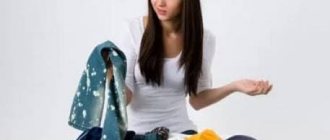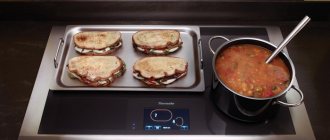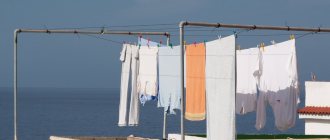08/15/2018 Category: Stains on fabric Author: Larisa Solopova
Removing sweat stains from clothes is not always easy, especially in the armpit area. Fortunately, there are many simple options on how to remove unpleasant odors and stains from your favorite items at home without resorting to dry cleaning.
- 2 Why stains from sweat are difficult to wash off
- 3 How to remove sweat stains
3.1 Professional products
- 3.2 Folk remedies
Causes of stains on clothes under the arms
Sweating is an integral part of the normal functioning of our body, and is not always comfortable in everyday life. Stress, excess body weight, changes in hormonal levels, increased thyroid function, banal heat outside - all this can cause increased moisture secretion in the armpits.
In fact, the sweat of a healthy person is colorless and does not have a pronounced odor. Stains on fabric are mostly caused by dried stains. Yellow stains on white clothes and white stains on dark ones are the result of mixing antiperspirant/deodorant with secretions from the sweat glands. There is another reason, but not so harmless - chromohidrosis, a malfunction of the sweat glands, as a result of which the sweat acquires an unusual color, and therefore noticeably stains clothes.
Sweat plays a very important role in the body: it prevents overheating, removes toxins, cleanses pores and destroys viruses and bacteria in our body.
Diagnostic procedures for urticaria
Diagnosis of acute urticaria is usually quite simple. An examination and questioning of the patient about his medical history is sufficient. Finding out the reason is not so easy, and for this purpose additional research is carried out:
1. Laboratory tests:
- general blood and urine analysis;
- blood biochemistry (liver tests - ALT, AST, bilirubin, rheumatic tests, blood glucose);
- stool examination (coprogram);
- bacterial cultures from the nasal and pharyngeal mucosa.
2. Instrumental research:
- chest x-ray;
- Ultrasound of the abdominal organs;
- endoscopic examinations of the upper and lower gastrointestinal tract (gastroscopy, colonoscopy).
3. Allergy tests:
- intradermal tests with allergens;
- cold and heat tests;
- physical stress tests, line drawing, tourniquet application.
4. Immunological methods.
5. Consultations of related specialists:
- gastroenterologist;
- endocrinologist;
- rheumatologist;
- gynecologist and others as necessary.
First of all, it is important for a specialist to establish what nature the urticaria is – allergic or non-allergic. In the allergic form, one can clearly trace the connection between the symptoms and the introduction of the allergen. It is confirmed by skin, allergy and immunological tests.
Why is sweat stains difficult to remove?
Sweating occurs continuously. The secretions of the sebaceous glands along with particles of the epidermis in a warm environment contribute to the proliferation of bacteria. And if the armpits are not treated in time, the secretions eat into the tissue. Growing over time, sweat stains turn clothes a poisonous yellow color. Moreover, this color indicates a strong degree of penetration into the fabric fibers.
Old stains are very difficult to remove even with the most powerful products
If we can deal with the characteristic smell of sweat on clothes only by washing, then removing yellow stains from light-colored clothes is problematic.
Methods for colorful fabrics
On colored fabrics, vinegar is used together with soda. 2 tablespoons are poured into 5 liters of cool water - this is a solution for soaking. Before soaking, sweat stains are rubbed with a solution of 4 tablespoons of soda in 200 ml of water. Immediately immerse the item in the vinegar solution and keep it there for 1 hour. Then wash as usual.
Another option is to place a piece of colored fabric in warm water with vinegar for 20 minutes: 3 tablespoons of vinegar per 5 liters. Then wash.
Are you using citric acid? Oh yes! No
How to remove sweat stains
People use stain removers and bleaches to remove stains.
Professional products
Stain removers are available for white, black and colored fabrics. It is important to purchase a product suitable for a specific color of clothing, otherwise, instead of removing the stain, you may end up with another problem - locally faded fabric.
Gentle stain removers are best for colored items
Products with chlorine and optical bleaching components are suitable only for whites, with active oxygen - for colors, with enzymes - for all types of fabrics . Most Popular:
- Stain remover ACE OXI MAGIC. This powder is suitable for washing both white and colored laundry. It is the least aggressive to tissues. We dilute the product in a small amount of water, treat sweat stains and leave the fabric to sit for a while with the solution. Then we put it in the washing machine, adding ACE OXI MAGIC to the main washing powder.
- Vanish OXI Action stain remover. There are types for white and colored linen, liquid and powder. The product copes well with fresh and old stains. First you need to pour a little liquid onto the surface to be treated, hold it like that for 20 minutes and put the item in the washing machine. Moreover, to enhance the effect, a little Vanish is again added to the powder.
Vanish OXI Action for white laundry is one of the most popular products, can be found in any household chemicals store
The stores offer a large line of bleaches, ranging from cheap ones to popular brands. But, as practice shows, not all even expensive stain removers cope with old “year-old” sweat stains.
Folk remedies
In addition to professional remedies, there are many more folk recipes, but you should be careful with them. The most popular options:
- Salt. Two tbsp. l. dilute with water to a paste and apply to the desired area of clothing. The solution is kept for two hours, then the item is sent for washing. Salt completely eats away sweat stains and is also universal for all fabrics, including delicate ones.
- Vinegar. Use with caution for colored and delicate fabrics. A clean napkin is generously moistened in a solution of vinegar and a small amount of water. Soak the area of clothing to be treated and leave for a short period of time so that the vinegar removes sweat stains. Then they wash the item.
- Baking soda, or sodium bicarbonate. Make a thick solution of four heaped tablespoons of baking soda and half a glass of water. Apply the mixture to the stains and rub into the fibers. Leave for two hours until the stains are completely removed and wash in hot water.
- Aspirin. Who would have thought that a regular medicine for fever could have other benefits! Aspirin is good at removing stains and yellow stains from sweat. The medicine contains acid, and this explains its versatility. Grind three or four tablets to a powder, mix with a tablespoon of water and apply the paste to the desired area. Let the fabric dry and put it in the washing machine.
Stains and odor from sweat can be regularly removed from unwashable jackets with Aspirin paste. - Hydrogen peroxide. This product is only suitable for removing yellow sweat stains from white and light-colored items. Dilute a small amount of peroxide with water in equal proportions and moisten the stains generously. For best results, the solution should be kept on the fabric for a while and only then thoroughly washed.
Peroxide will not harm even silk fibers, but may slightly discolor the fabric. - Laundry soap. It is necessary to soap the contaminated areas and leave for about one hour. After this, the item goes into the washing machine. Fresh stains can be removed 100% using this method.
Laundry soap contains alkali and removes old sweat stains in one hour
What not to do
To effectively cope with the removal of pollution, you need to take into account not only its nature, but also the type of textile. With regular machine washing, even the best enzyme powder or gel will not solve this problem. Moreover, after each next such procedure, the secretion of the sweat glands will only accumulate in the seams and structure of the material.
What else you shouldn’t do to avoid completely ruining your clothes:
- Use chlorine bleach. The main active element of such substances reacts with protein and the stain darkens even more.
- Use high temperature. This applies to washing and drying. Clothes with sweat stains should not be placed on a hot radiator. Wet cleaning is permissible at 30 ° C, and drying is allowed in partial shade or in the open air.
- Treat marks on silk items with vinegar and acetone, and gasoline on synthetic items. Cotton is afraid of acids, and wool is afraid of alkalis.
- Acetone is contraindicated for colored clothing, as it can dissolve the dyes.
Important: during the cleaning process, you should not rub the item too hard. Otherwise, the fabric structure will be damaged and the tone may change.
How to remove yellow marks from sweat under the arms
Almost any stain removers and bleaches are suitable for white items. Light-colored natural fabrics are considered the most easily soiled, but they are easier to process, because you can use even strong chemical chlorine agents.
Bleach works in a completely different way than stain removers. The laundry is first washed, then soaked in a bleach solution and only then rinsed several times.
Depending on the type of fabric, we can choose a cleaning agent:
- Any compositions are applicable to white cotton: both oxygen and chlorine-based.
- Oxygen and enzyme agents are suitable for synthetics.
- Hydrogen peroxide will help white silk and thin fabrics.
- Oxygen and enzyme stain removers are suitable for colored natural fabrics and dark-colored clothing . Baking soda, salt and laundry soap will be effective for removing fresh stains. We dilute each of these products in water and apply it to stains on the armpits, shirt cuffs and collars.
It is best to wash woolen blouses and delicate fabrics by hand using laundry soap. You can rub the dirtiest places with soap soaked in it and let it sit like that for at least an hour. During this time, the soap will eat away the stains, and we will only have to wash the items in the delicate wash mode.
Synthetic fabrics can be both unpretentious and capricious. To remove yellowness from “delicate” synthetics:
- Mix a solution of 10 ml of ammonia, hydrogen peroxide, shavings of half the laundry soap and 5 liters of water.
- We immerse the laundry in it for one hour.
- We send the soaked item for a full wash in the washing machine.
We fight for the cleanliness of the collar and cuffs
Sweating stains can be found not only in the armpits and waist area. People who sweat profusely notice spots on their collars and cuffs. Due to the density of pollution, it must be dealt with in a special way.
One of the proven options is treatment with table vinegar. A cotton pad or piece of fabric is moistened with a small amount of liquid, and then the collar is treated. To avoid damage to the product, it is recommended to immediately test it in an inconspicuous area. After treatment, clothes are washed as usual.
A mixture of ammonia, salt and water (proportions 4:1:4) applied to a sponge or tampon is also suitable. It must be left for 10 minutes and then washed.
Simple tips will help you get rid of even old stains left by sweat on your favorite things.
Precautionary measures
To combat products effectively and safely, you must follow a few simple rules:
- Always pay attention to the care rules and recommendations, which must be sewn to the tag on the inside of the item.
- Also follow the instructions for stain removers and bleaches.
- If you cannot determine the type of tissue, it is better not to take risks and use only a universal oxygen agent. Otherwise, removing the stain may lead to its final fixation on the fabric or removal of paint in the armpit area.
- It is prohibited to use chlorine-containing bleaches for any synthetics, too thin items made from natural fabrics, as well as natural silk..
- If the product is strongly rubbed during cleaning, the fabric may become thinner or the weave structure may be disrupted, which will lead to tears and holes.
- By constantly using chlorine-containing bleaches, we risk reducing the wear life of the product. After all, chlorine, penetrating deeply into the fibers, not only quickly bleaches them, but also quickly thins them.
Preventing stains and odors
You can protect dresses, shirts and sweaters from stains by using special replaceable armpit pads. This is very convenient; you don’t have to wash dirty places every time. It is enough to change the pad for a new one, and we will solve the problem of sweating for the whole day.
These replacement inserts are very easy to use. You need to remove the protective film from the back and stick it to the clothes with the adhesive side. The pads perfectly absorb both sweat and odor. And they are completely invisible from the outside of clothing.
The inserts adhere well to clothing thanks to the adhesive base
Personal hygiene has not been canceled either. The more often you wash and treat your armpits, the less sweat will remain on your clothes. The person himself is more comfortable when he feels the freshness of his body.
If you sweat a lot, use an antiperspirant. The latter is fundamentally different from deodorant. If a deodorant simply removes the smell of sweat, leaving the moisture itself on the body, then an antiperspirant dries out the skin, and the salts in the product partially block sweating. Traces of antiperspirant will be dissolved by the same oxygen stain remover or crushed A spirin .
Deodorant and antiperspirant differ in their functions
Wear loose clothing. Fabric that is tight in the armpit is most likely causing sweating and also causing blemishes. Loose clothing will keep you cooler and reduce the chance of stains on your clothes.
When and which doctor to contact
Usually a doctor is consulted:
- if the rash spreads over a large area;
- when symptoms increase;
- when signs of general intoxication occur;
- if the urticaria does not go away on its own after eliminating the factor that caused it;
- if the disease becomes chronic or often recurs,
It is advisable not to delay your visit to the doctor and come when the first manifestations of the disease occur. Then it will be easier to establish the cause, and treatment will take less time. In addition, the doctor will recommend what to do to prevent hives.
A therapist or pediatrician, a dermatologist can provide assistance with urticaria, and an allergist is involved in targeted diagnosis and treatment.
